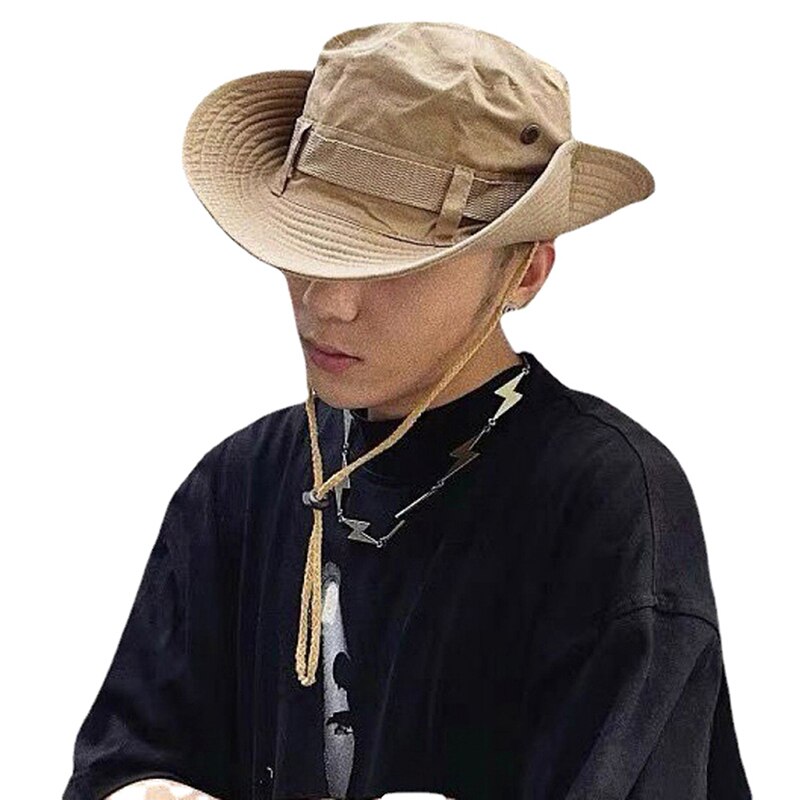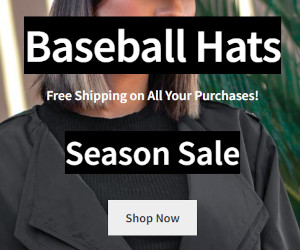
Introduction: The Importance of Fishing Hats
Fishing hats are more than just a practical accessory; they play a crucial role in ensuring comfort and protection while you’re out on the water. Designed to shield you from the elements and enhance your fishing experience, these come in various styles and features tailored to different needs and preferences. As the shopping season approaches, it’s the perfect time to explore your options and find the ideal hat for your next fishing adventure.
In this comprehensive guide, we’ll explore the evolution of fishing hats, current trends, and essential tips for shopping during the season. Whether you’re an avid angler or new to the sport, this article will help you navigate the choices and find the perfect one to suit your needs.
The Evolution of Fishing Hats
Fishing hats have evolved over the years, reflecting changes in both fashion and functionality. Here’s a look at how it have developed:
- Early Designs: Historically, these were simple and functional, designed to provide basic protection from the sun and rain. Early designs often featured wide brims made of natural materials, such as straw or felt, to offer shade and keep rain off.
- Mid-20th Century: In the mid-20th century, these began to incorporate more advanced materials and features. The introduction of synthetic fabrics, such as nylon and polyester, allowed for greater durability and water resistance. Hats started to include features like adjustable straps and ventilation to enhance comfort.
- Modern Trends: Today’s come in a wide range of styles and designs, reflecting both practical needs and fashion trends. Modern hats often feature advanced materials, such as moisture-wicking fabrics and UV protection, as well as additional features like built-in neck flaps and insect repellents.
- Innovative Features: Recent innovations include integrated LED lights for early morning or night fishing, collapsible designs for easy storage, and multi-functional hats that combine features like sun protection, rain resistance, and mosquito netting.
Benefits of Wearing Fishing Hats
Fishing hats offer several benefits that enhance your fishing experience and overall comfort. Here are some of the key advantages:
- Sun Protection: these provide essential protection from harmful UV rays, helping to prevent sunburn and reduce the risk of skin cancer. Many feature wide brims and UV-resistant materials to offer optimal sun protection.
- Rain and Water Protection: these help keep rain and water off your face and neck, ensuring that you stay dry and comfortable while fishing. Waterproof or water-resistant materials, along with adjustable brims, enhance this protection.
- Heat and Sweat Management: Many are designed with ventilation panels and moisture-wicking fabrics to help manage heat and sweat. This ensures that you stay cool and comfortable, even on hot and humid days.
- Insect Protection: Some come with built-in insect nets or repellent treatments to keep mosquitoes and other bugs at bay. This feature is especially useful during the warmer months or in areas with high insect activity.
- Convenience and Practicality: Fishing hats often include practical features such as adjustable straps, chin cords, and pockets for storing small items. These features add convenience and functionality to your fishing gear.
When Is Fishing Hats Shopping Season?
These shopping season typically aligns with key times of the year when anglers are preparing for their fishing adventures. Here are some of the peak times for shopping for fishing hats:
- Spring and Summer (March to August): Spring and summer are prime fishing seasons, making it an ideal time to shop. Many anglers prepare for their fishing trips during these months, so retailers often have a wide selection of hats available.
- Pre-Fishing Season (Late Winter to Early Spring): Late winter and early spring are times when many anglers begin to prepare for the upcoming fishing season. Shopping during this period ensures you’re ready for the start of the season.
- Sales and Promotions (Holiday Season and Black Friday): Retailers often offer sales and promotions on fishing gear during the holiday season and Black Friday. This is a good opportunity to find discounts and other equipment.
- Fishing Expos and Trade Shows: Fishing expos and trade shows, held throughout the year, are excellent opportunities to explore a wide range of fishing hats and other gear. These events often feature new products and innovations in fishing apparel.
Styles and Features: Choosing the Right Fishing Hat
When shopping, it’s important to consider the styles and features that best suit your needs and preferences. Here are some key factors to keep in mind:
- Styles: These come in various styles, including:
- Bucket Hats: Bucket hats are a classic choice for fishing. They feature a wide brim and offer excellent sun protection. Many bucket hats have adjustable cords and are made from lightweight, water-resistant materials.
- Wide-Brim Hats: Wide-brim hats offer extended sun and rain protection with their larger brim. They are ideal for long days on the water and are often designed with UV-resistant fabrics.
- Mesh Hats: Mesh hats feature breathable mesh panels that enhance ventilation and heat management. They are a good choice for hot and humid conditions.
- Convertible Hats: Convertible hats offer versatility with removable brims or neck flaps. They can be adjusted to suit different weather conditions and activities.
- Cap-Style Hats: Cap-style hats, including baseball caps, are a popular choice for casual fishing. They offer a more streamlined look and may include features such as sweat-wicking bands and adjustable straps.
- Features: Consider additional features that enhance the functionality and comfort of the fishing hat:
- UV Protection: Look for hats with UV-resistant fabrics or built-in UV protection to shield your face and neck from harmful sun rays.
- Water Resistance: Hats made from water-resistant or waterproof materials help keep rain and water off, ensuring you stay dry and comfortable.
- Ventilation: Hats with ventilation panels or mesh inserts improve airflow and help manage heat and sweat.
- Insect Protection: Some hats come with built-in insect nets or repellent treatments to keep bugs at bay.
- Adjustability: Adjustable straps, chin cords, and elastic bands ensure a secure and comfortable fit. Look for hats with these features for added convenience.
- Materials: The choice of material affects both the appearance and functionality. Common materials include:
- Nylon: Nylon is a lightweight and durable material often used in fishing hats. It offers water resistance and quick-drying properties.
- Polyester: Polyester is another popular material known for its durability and moisture-wicking capabilities. It is often used in combination with other fabrics.
- Cotton: Cotton hats are breathable and comfortable but may lack water resistance. They are suitable for dry conditions and casual fishing.
- Waterproof Fabrics: Waterproof fabrics, such as Gore-Tex, provide enhanced protection from rain and water. These are ideal for fishing in wet conditions.
Tips for Shopping During Fishing Hats Season
The fishing hats shopping season can be an enjoyable experience, but it’s important to keep a few key tips in mind to ensure a successful purchase:
- Know Your Needs: Consider the type of fishing you’ll be doing and the conditions you’ll be facing. Choose a hat that meets your specific needs, whether it’s sun protection, water resistance, or insect protection.
- Try on Different Styles: If possible, try on different hat styles to see what suits your head shape and provides a comfortable fit. Many retailers offer adjustable hats to ensure a good fit.
- Check for Quality: Look for well-made hats with durable materials and secure stitching. Check for any potential issues, such as loose seams or poorly finished edges.
- Set a Budget: These come in a range of price points, so it’s important to set a budget before you start shopping. Determine how much you’re willing to spend and look for options within your budget.
- Shop from Reputable Brands: Choose hats from reputable brands known for their quality and performance. Read reviews and seek recommendations to ensure you’re making a trusted purchase.
Fishing Hat Maintenance and Care
Proper care and maintenance of your fishing hat will help keep it in good condition and extend its lifespan. Follow these tips to ensure your hat remains in top shape:
- Cleaning: Follow the care instructions provided by the manufacturer for cleaning your hat. Many hats can be hand-washed with mild detergent and air-dried.
- Storage: Store your hat in a cool, dry place away from direct sunlight and moisture. Avoid crushing or deforming the hat by keeping it in a hat box or on a hat stand.
- Avoid Harsh Chemicals: Keep your hat away from harsh chemicals, such as bleach or strong detergents, as they can damage the materials and affect the hat’s appearance.
- Inspect Regularly: Check your hat regularly for signs of wear and tear, such as frayed edges or damaged brims. Repair or replace any damaged items to ensure your hat remains functional and stylish.
Conclusion: Embracing the Fishing Hats Shopping Season
The fishing hat shopping season is an excellent opportunity to explore new styles, enhance your fishing gear, and find the perfect hat for your needs. With a wide range of options available, from classic bucket hats to modern convertible designs, there’s a one to suit every angler’s preference.
By understanding the benefits, trends, and features of fishing hats, you’ll be well-equipped to make the most of your shopping experience. Embrace the chance to find the ideal one that combines style, functionality, and comfort for your next fishing adventure.


